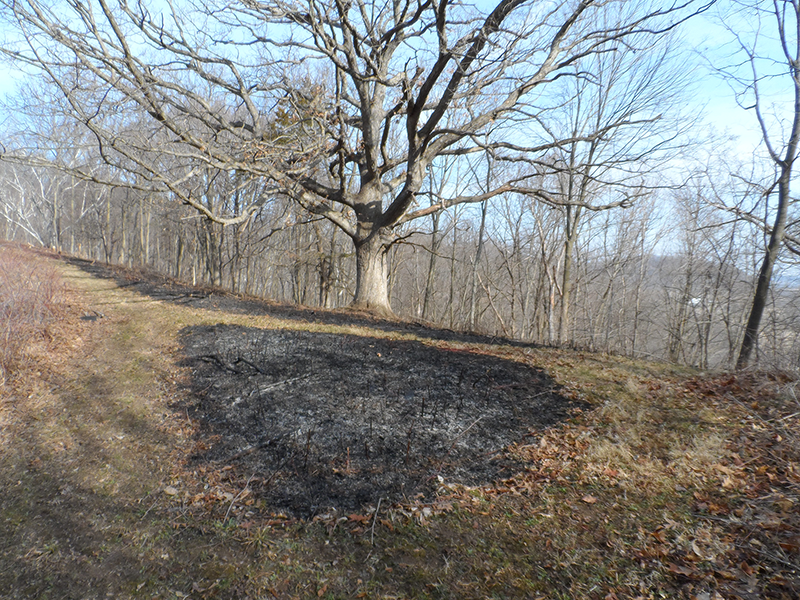
Messengers Matter

By Steve Swenson, Program Director
As a teenager, Peggy Timmerman would have characterized her mother’s interest in nature as over-enthusiastic. Plants individually labelled with Latin names in their backyard woodland garden in Madison, Wisconsin were met with Peggy’s total indifference. Gardening and the study of botany were as unappealing a hobbies as a teenage Peggy could have imagined, and she exerted no effort to learn blooms by name. “I’m sure I rolled my eyes when we would talk about it,” Peggy says. Years would pass before Peggy put those teenage attitudes into proper context.Peggy’s mom, Katharine Bradley, was born in 1920 and was formally trained in botany, earning a Ph.D. from the University of Michigan. After moving to Madison and starting a family, she put her training into service as the first female director of the University of Wisconsin-Madison Arboretum, a position she held from 1974-1983. This very productive period saw the opening of the McKay Center to better engage the public, and the launch of Restoration and Management Notes, the first journal in the world to address management of high-quality plant communities. She would balance her substantial duties of administration and fundraising with daily walks through the “arb’s” restored natural areas. Peggy now appreciates that a few native seeds nurtured in their backyard woodland garden was a pretty minor message from her incredibly busy and successful mom.

Today, as fate would have it, Peggy has her own “woodland garden” and daughters. While it’s tidy to just conclude her mother’s message made it passed the eye-rolls, we might do better to realize sometimes the messenger is the message.
It’s no secret that land ownership in the U.S. has long been the entitlement of men. In fact, the word “husband” initially had no connection to marital status. The word originally meant “occupier and tiller of the soil,” and then changed over time to mean “male head of a household,” until it finally came to have the meaning it has today. In other words, in language as in reality, land ownership was tied to men. For generations, males have controlled land acquisition, ownership, and decision-making, but this trend is changing. Today, the majority of private land, 58 percent, is co-owned with women. While in 2006, 89 percent of the primary decision-makers regarding land were males, by 2013, that percentage dropped to 78. Sure, this trend is bolstered because women live longer than men, but it is also true that many women are seeking the thrill of land ownership. Boldly entering a “man’s world” comes with real challenges, but at least in Peggy’s case, messengers have made all the difference.
The passing of Peggy’s mother in the early 1990’s rekindled another familial connection. Peggy’s uncle is Charles Bradley, husband of Nina Leopold Bradley, who is the daughter of Aldo Leopold. “Nina and Charlie inspired our desire to be landowners. Nina’s enthusiasm for land ownership made it that much more alluring,” Peggy says. For the next few years, Peggy and her husband Mark Timmerman eagerly monitored land sales within a preferred boundary scribed on a map. “We must have looked at 25 to 30 properties,” Peggy recalls.
Neither of them had ever lived in the country, owned land, or cared for it. But to their credit, they knew it would need care and set expectations early. “We each had our own interests for ownership,” Peggy explains. “Mark’s demanding professional career limited his involvement day-to-day. He saw land as an investment and family recreational opportunity. I was interested in caring for the land, and knew from the beginning, it was largely on my shoulders.”
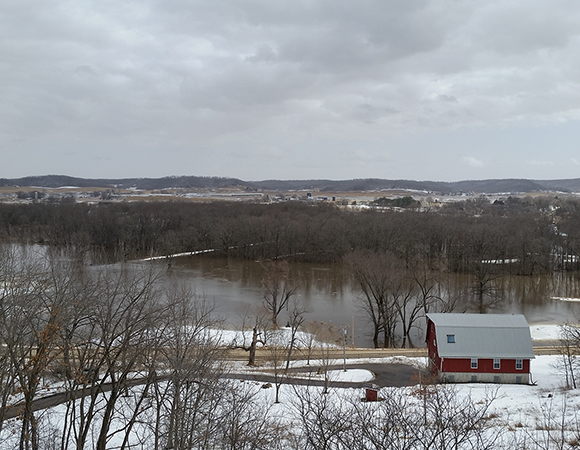
In 1995, in their mid-thirties, they had found their property in southeastern Richland County. Smack dab in the middle of Wisconsin’s hilly Driftless region, these 115 acres had a bluff top overlook, lowland floodplain and marsh, and everything in between. They walked the property in November and put an offer in that same day. Once the papers were signed, the property was theirs.
Peggy remembers, “We bought it late in the year and didn’t really know what we had, so I invited a college friend out that was also a property owner who knew a lot about native plants.” Muffy Barrett and her husband, Scott Weber, own Bluestem Farm, a native prairie and savanna seed nursery in Baraboo, Wisconsin. Muffy walked the new Timmerman property and found many good plants, including prairie and savanna species on the steep south-facing slope. Muffy called it a “goat prairie” because it was so steep only goats could traverse it. As she recognized some of the plants of her youth, it wasn’t lost on Peggy that she was welling with pride over the same blooms that once drew apathy. Peggy’s mother didn’t live long enough to see the property, but Peggy was certain she would have enjoyed that moment. Muffy went on to point out the large, out-stretched branches of open-grown oak trees that used to be among the few trees present, but which were now crowded by undergrowth.
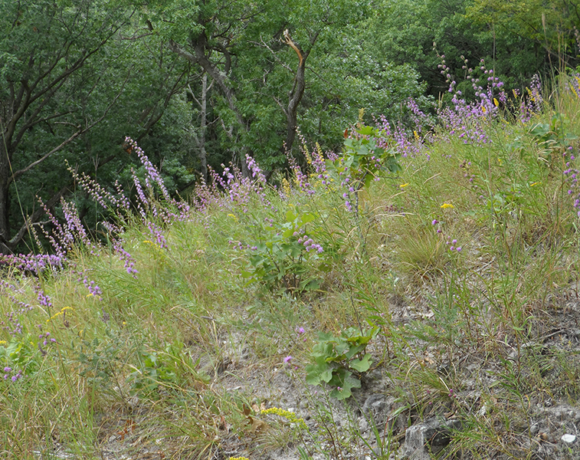
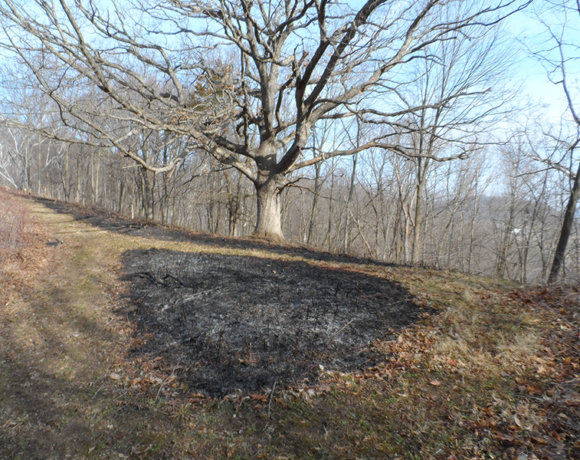
On the north- and east-facing slopes there were richer soils with more moisture to support sugar maples. The expansive marsh adjacent to the Pine River seemed formidable most of the year. Peggy recalls their first forays into it were during winter when they didn’t have to fight mosquitos or hip-deep water.
The existing house and barn were unusable. Weekends at their new retreat for the first few years tested their mettle–a combination of hard work, tent camping, and bugs. They finished building a home there in 2000, but it would be seven years before they would move in there full-time. As Peggy says, “Owning a recreational property is one thing, living there is a whole other level of commitment.” They had never lived in the country and didn’t fully know what to expect. There was even a little bit of them that thought living there would detract from its aura as a getaway.
Pushing trepidation aside, in 2007 they moved in permanently. “I didn’t realize how much fun it would be to see the property day after day through all the seasons,” says Peggy, whose responsibilities to care for the land got much more enjoyable and convenient, but were also a real priority. Peggy readily admits, “I had no idea what I was getting into.” She laughs, recalling, “Our first trail was created with a yard string trimmer and a sickle.” She knew she needed to educate herself.
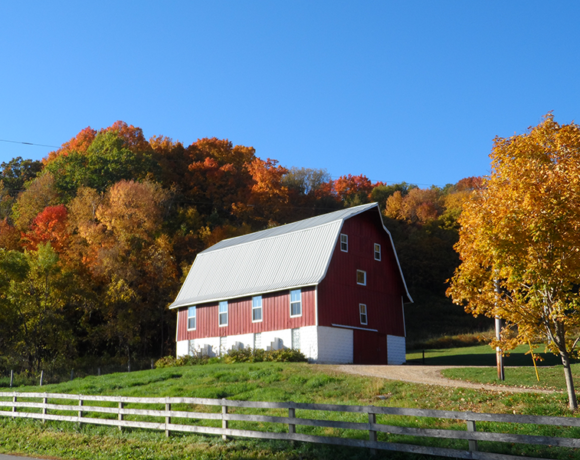
She read a lot of environmental non-fiction and began to attend classes and workshops in the area. Nothing made her more self-aware of her naiveté than these male-dominated settings. She enjoyed classroom learning but at times felt she was out of place. Research has shown that women don’t necessarily need or want different information, but they have greater comfort learning among their female peers and benefit from more social learning environments. More and more, landowner classes and workshops have female presenters, participants, and/or women-only registration. That’s how Peggy first met Gigi LaBudde.
Gigi and her husband own property around Spring Green, Wisconsin and have similar expectations for land ownership and care as Peggy and Mark. Gigi has a great personal interest in land care, much of which has been self-taught. Through her many connections in southwest Wisconsin, she enjoys sharing what she knows with others. Not one to be intimidated by audience or setting, Gigi has led dozens of trainings as a Pied Piper of sorts for invasive species control and prairie management. These two topics have sparked a lasting connection between Peggy and Gigi. Both couples were part of O.W.L.S. (Older Wiser Land Stewards), an informal group of landowners with a common purpose to share labor and ideas among its membership. Although the group is no longer active, the friendships have endured.
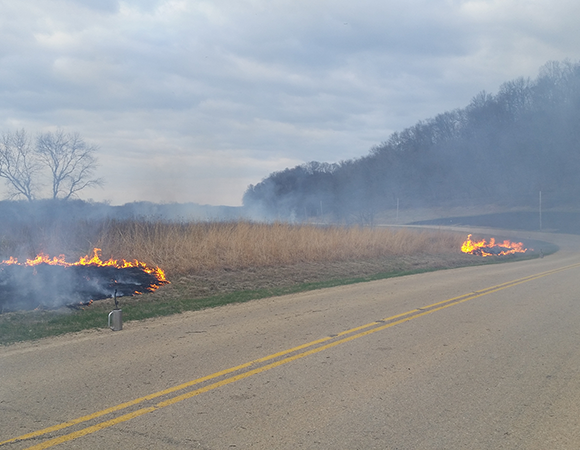
Educating yourself is one thing; taking action is a whole other. It is a leap–in faith, effort, anxiety, and expense–for anyone, but especially for women landowners. Classes and workshops only get you so far, and at some point landowners need to bridge classroom education to their own land. Walking your land with a natural resource professional is by far the best way to bridge that gap. Peggy began to invite natural resource professionals out to the property from public agencies like Natural Resources Conservation Service and Wisconsin Department of Natural Resources as well as from private groups like The Prairie Enthusiasts, Lower Wisconsin Riverway Board, and Aldo Leopold Foundation, among others. She really enjoyed the interactions, even if she felt a little awkward at the outset. A decade ago, Peggy would have been on the leading edge of women landowners seeking professional support. Peggy remembers, “It was easier for me to be seen as the decision-maker because I was asking all the questions and Mark was usually at work and had no interaction with these professionals.”
There has been a steady increase in the number of female natural resource professionals, yet more often than not, when one calls a natural resource professional out for a visit from either a public or a private group, unless one makes a specific request for a woman, one should probably expect that a male professional will arrive. She can recall clearly two instances in which she was either not respected or included. But after many interactions, Peggy has landed on three things that have yielded positive results. One is to be prepared to have a conversation, which usually means having questions ready. Two, demonstrate you have a real interest in learning what they are sharing, and they will likely reciprocate. And, three, if you want to be seen as the primary decision-maker, you probably need to attend the meeting without your husband. This may seem to be an unfortunate deduction of Peggy’s, and certainly, while she has learned useful strategies as a woman landowner and decision-maker dealing with male natural resource professionals, we can all agree that it’s time for natural resource professionals to treat women landowners and decision-makers with the respect that they deserve.
There are plenty of reminders that this is still the husband’s or man’s world. Equipment design reflects a male target audience. “I find much of the equipment is built for men. I’ve had to purchase equipment that is too big, handles too wide, and weight too heavy, which leads to frustration and a toll on the body. And, I’m pretty fit for a woman my age!” says Peggy. At this point, she’s developed a confidence about what she doesn’t know. “I have them show me how to start it, fill fluids, and change and sharpen blades. I realized if I was going to last, I needed to work smarter, not harder.”
One way to work smarter is to hire a contractor, which is a great idea, but doing so escalates costs quickly. The other method is to find what has worked for others. Once again, messengers mattered. Peggy found other women landowners physically involved in the care of their own land. Sue Steinmann of Arena, Wisconsin and Meg Ziegler of Spring Green, Wisconsin have been Peggy’s “go-to” friends for land management questions. She figures if they can do it, so can she. When Peggy gets stuck or needs a few words of encouragement, Sue and Meg can relate. And, self-realization has a way of bringing things full-circle.
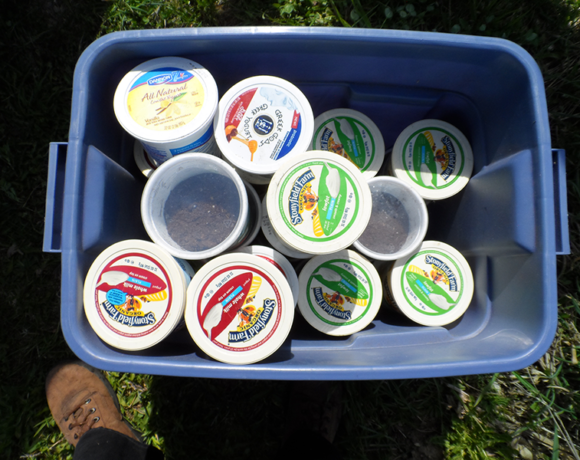
Peggy’s daughter, Kit, is an artist who just recently started living on the property, too. With more than a hint of pride and a lot of caution, Peggy relays, “I get to be a bit of a mentor, hopefully without being too overwhelming.” Although Peggy would make her mother proud with all of the Latin names she knows, Peggy and Kit have an artist’s eye in common. “It’s great. When I was teaching her about garlic mustard control, Kit quickly picked up its distinctive green color and became very efficient at locating it.”
At this point, there is little doubt that Peggy internalized her mother’s message that nature was worthy of care–for the good of the earth and oneself. And, after thousands of hours invested in land care, with many successes and a few failures, Peggy’s realistic view might have landed on our best chance to keep the earth healthy for generations to come. Peggy readily acknowledges the long-view on their fight against the invasive garlic mustard is not favorable. “All my neighbors have given up. They lost the war.” But maybe it’s not about garlic mustard at all. Maybe it’s about expanding the care of the land to all those who wish to participate. In this case, that means women inspiring other women to care for the land and pass it onto the next generation of women landowners. “My mom never got to see the property. She would have loved it,” Peggy says, looking over the goat prairie from the high point, “She would have been tickled.”
